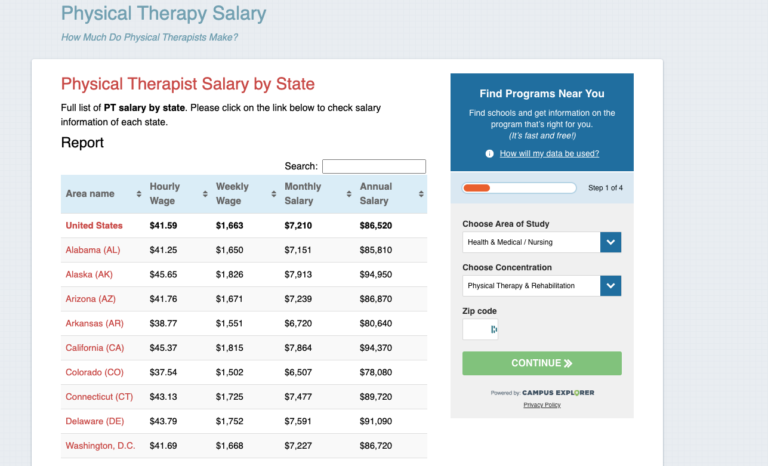Covid-19 Helps Telehealth Services Take Off in the Physical Therapy World
Covid-19 has done a lot of things. It has shut down businesses, it has forced people into quarantine, and it has given telehealth services a huge boost in the physical therapy world. Telehealth was not new to the space, but it certainly was not utilized or commonplace in this profession until March of 2020. In fact, one could argue that Covid-19 was the catalyst for telehealth’s massive expansion in the physical therapy world.
There are a few reasons for this. First, telehealth provides a way for physical therapists to continue seeing patients and providing care when in-person visits are not possible. This is especially important during a pandemic, when people are trying to limit their exposure to others as much as possible. Second, telehealth can be a more convenient option for patients, who may not be able to make it to an in-person appointment due to work or child care obligations. And finally, telehealth services are often covered by insurance, which makes them more accessible to patients.
It’s important to note that telehealth is not a replacement for in-person care. There are some types of physical therapy that can only be done in person. But for many patients, telehealth is a great option that can provide them with the care they need while also keeping them safe.
There’s no doubt that telehealth services have come a long way in recent years. And with the help of Covid-19, they’ve taken off in the physical therapy world like never before. The APTA and Private Practice Section of the APTA have been lobbying as an advocate for telehealth to continue in a post-pandemic world. This is not a small undertaking, but something they are pushing hard!
“The CARES Act, enacted March 27, 2020, granted CMS authority to waive statutory restrictions during the COVID-19 Public Health Emergency (PHE). CMS used this waiver authority to enable physical therapists to bill for telehealth services furnished to Medicare Part B beneficiaries—but only for the duration of the PHE. When the PHE is over, this Medicare coverage for telehealth care will also end.” The Biden Administration has declared that there will be a 60-day heads up for the expiration of the PHE. This means that another 90-period will continue into mid-October; ultimately allowing telehealth to be covered as a benefit for Medicare beneficiaries.
“CMS does not have the regulatory authority to permanently extend payment to these providers. To achieve this policy change, Congress must enact legislation to ensure that Medicare beneficiaries can continue accessing their physical therapy care via telehealth, in addition to traditional in-person care.”
“While the use of telehealth clearly does not eliminate the need for in-person visits, it can enhance delivery and coordination of care, reduce barriers, and increase access to a greater variety of providers. Studies have shown that physical therapist use of telerehabilitation can result in cost savings, improved outcomes, increased access, and higher patient satisfaction. By providing assessments, care, and interventions via telehealth, physical therapists can prevent falls, reduce functional decline, avoid costly emergency room visits, and reduce hospital admissions as well as readmissions—all while reducing disparities in care.”
There are many bills on the floor right now to assist with permanently enabling therapists to provide care via telehealth. Below are the legislative action that the PPS is taking currently:
– Expanded Telehealth Access Act (S.3193/H.R.2168) would permanently add physical therapists, physical therapist assistants, and other rehabilitation therapists to the statutory list of distant site providers that Medicare pays for telehealth.
A step in the right direction, but don’t achieve PPS’ legislative priority:
- Telehealth Modernization Act (S.368/ H.R.1332) as a part of Cures 2.0 (H.R.6000) would enable the Secretary
- of HHS to permanently expand the types of health care providers that can offer telehealth services and the types of services that can be reimbursed under Medicare, but this bill does not ensure the inclusion of physical therapists in this list.
- Telehealth Extension Act (H.R.6202) would extend the current PHE-related telehealth waivers for an additional 2 years. H.R.6202 would also remove the current originating site and geographic limitations from the statute; this would allow all providers authorized to provide care via telehealth to Medicare beneficiaries to do so without the current site or location restrictions. However, until physical therapists are allowed to provide care via telehealth on a permanent basis (see Expanded Telehealth Access Act above), this change in site restrictions will not benefit private practice physical therapists.
- Telehealth Extension and Evaluation Act (S.3593) would extend Medicare payments for an additional 2 years.
Using telehealth to provide physical therapy has been shown to provide access to safe and effective care which also results in high-quality outcomes. Legislation is needed to allow Medicare beneficiaries to permanently access therapy care via telehealth in addition to traditional in-person care.
If you are a therapist, or a patient, looking to help take action to permanently allow for telehealth, please contact your local representatives!





